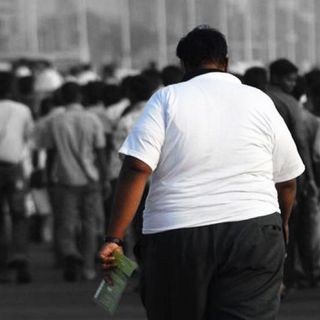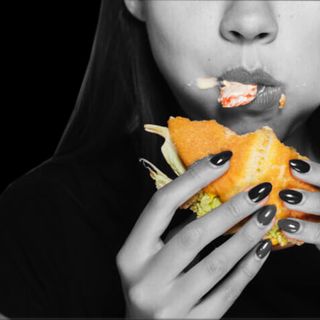
How Much Water Should You Drink in a Day, Really?
The eight-glasses-of-water-a-day advice lingers, even though research disproved it 20 years ago.

The eight-glasses-of-water-a-day rule was outed for the myth it was nearly 20 years ago. But it lingers in popular consciousness, largely because no snappy, hydrating recommendation arose to take its place. “Shrug, drink when you feel like it,” doesn’t exactly have the same ring in our health-and-rule-obsessed society — even if that’s exactly how much water you should drink in a day.
Hydration advice from experts now focuses on individualized needs. While everyone’s body is composed of roughly 60% water, the way their bodies use that water — and thus, their need for replenishing it — varies by their diet, age, weight and height, level of physical activity, general health, home climate and whether they’re pregnant or breastfeeding. For instance: Someone who works out regularly would likely lose more water through sweat — and thus need more water — in a day, than someone with a less active lifestyle. (Hydration after or during extreme exercise should be accompanied by rehydrating salts to avoid hyponatremia, i.e., too much water.) People living in hot and humid climates, or at high altitudes, may require more water than people in drier and/or more temperate climates for the same reason. Someone sick with a fever needs more water than a healthy person. And pregnant women and breastfeeding mothers also require more water than average.
In light of all the variables, most experts now agree drinking whenever you’re thirsty is the best way to make sure you’re getting enough water.
“The myth that it’s too late when you’re thirsty is based on the supposition that thirst is an imperfect marker of a fluid deficit, but why should everything else in the body be perfect and thirst be imperfect? It’s worked very well for thousands of years of human evolution,” Courtney Kipps told the BBC earlier this year. Kipps is a consultant sports physician and principal clinical teaching fellow of sports medicine, exercise and health at University College London, and the medical director of Blenheim and London Triathlons.
Related on The Swaddle:
Untrending: Juicing Is Worse Than Useless
Another trick to determining how much water you should drink? Watching the color of your urine. (This method of tracking hydration may be most helpful to older adults, as we become less sensitive to thirst as we age.) Pale yellow or colorless urine means you are well hydrated, while darker urine — dark yellow, or orange — indicates you need water.
But that water doesn’t have to come from an eight-ounce glass. Per calculations by the U.S. National Academies of Sciences, Engineering, and Medicine, the average man requires 3.7 liters of water a day, and the average woman requires 2.7 liters a day. But, depending on your diet, a large fraction of that water comes from food (as much as 20% for North American diets; no reliable estimates are available for Indian diets.) Many raw fruits and vegetables — such as watermelons, cucumbers,and spinach — contain high volumes of water that hydrate just as well as water from a glass. Coffee, tea, and milk — which are all mostly water — also aid hydration. (So do fruit juices and sodas, but their high sugar content makes it inadvisable to rely on them for daily hydration.)
Bottom line? Just as intuitive eating is gaining ground as a healthy way to shape one’s diet and ensure nutrition, so is intuitive drinking — the best guide to how much water you should drink in a day.
Liesl Goecker is The Swaddle's managing editor.
Related


70+ U.S. Organizations Launch the First‑Ever Global Blueprint for Sexual and Reproductive Justice
